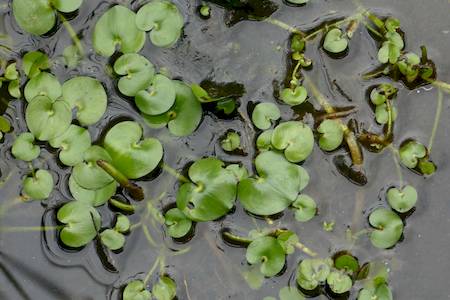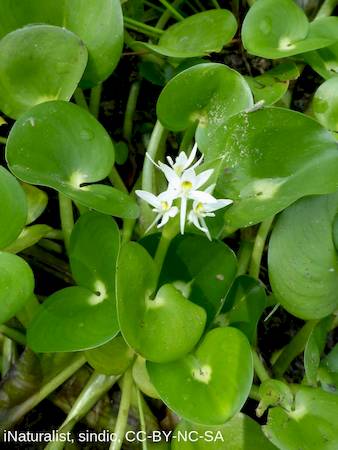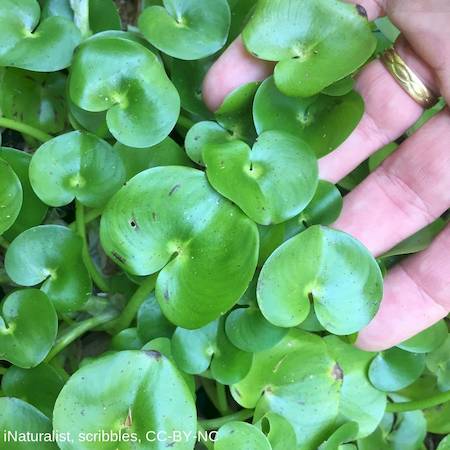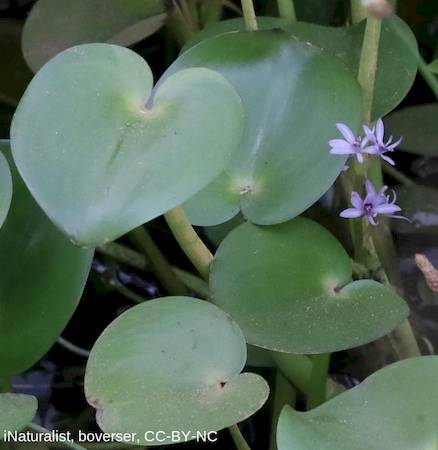Weedscan Weed Profiles
WeedScan is a free community weed identification, alert, recording and communication system that supports cooperative weeds action Australia-wide. The weed profiles are being improved, please send feedback to weeds@invasives.com.au
View the Project on GitHub Centre-for-Invasive-Species-Solutions/demo_json_api
Pontederiaceae
Heteranthera reniformis
Common Names: Kidney-leaf mud plantain
Plant Form: Aquatic mat-forming herb. Size: 20-50 cm above water or mud surface. Stem: Either along mud or submerged anchored to ground. Roots form at nodes along stem. Leaves: Bright green, spongey, glossy, kidney-shaped, narrow when young, widening to 5 cm with age. On stalk 2-13 cm long. Flowers: White to purplish-blue with 6 petals, on a spike up to 10 cm long in groups of 2-10. Open in morning and wilt in afternoon. Fruit and Seeds: Tiny capsules 1 mm long, containing 8-14 seeds. Habitat: Rivers, wetlands, drains, ditches, fields, irrigation channels. Distinguishing Features: Distinguished from Water hyacinth (Eichornia crassipes) by its white non-distinct flowers and anchored rather than free-floating form. Impacts: Affects water flow, outcompetes native species, reduces food for aquatic animals, can reduce crop yield.



